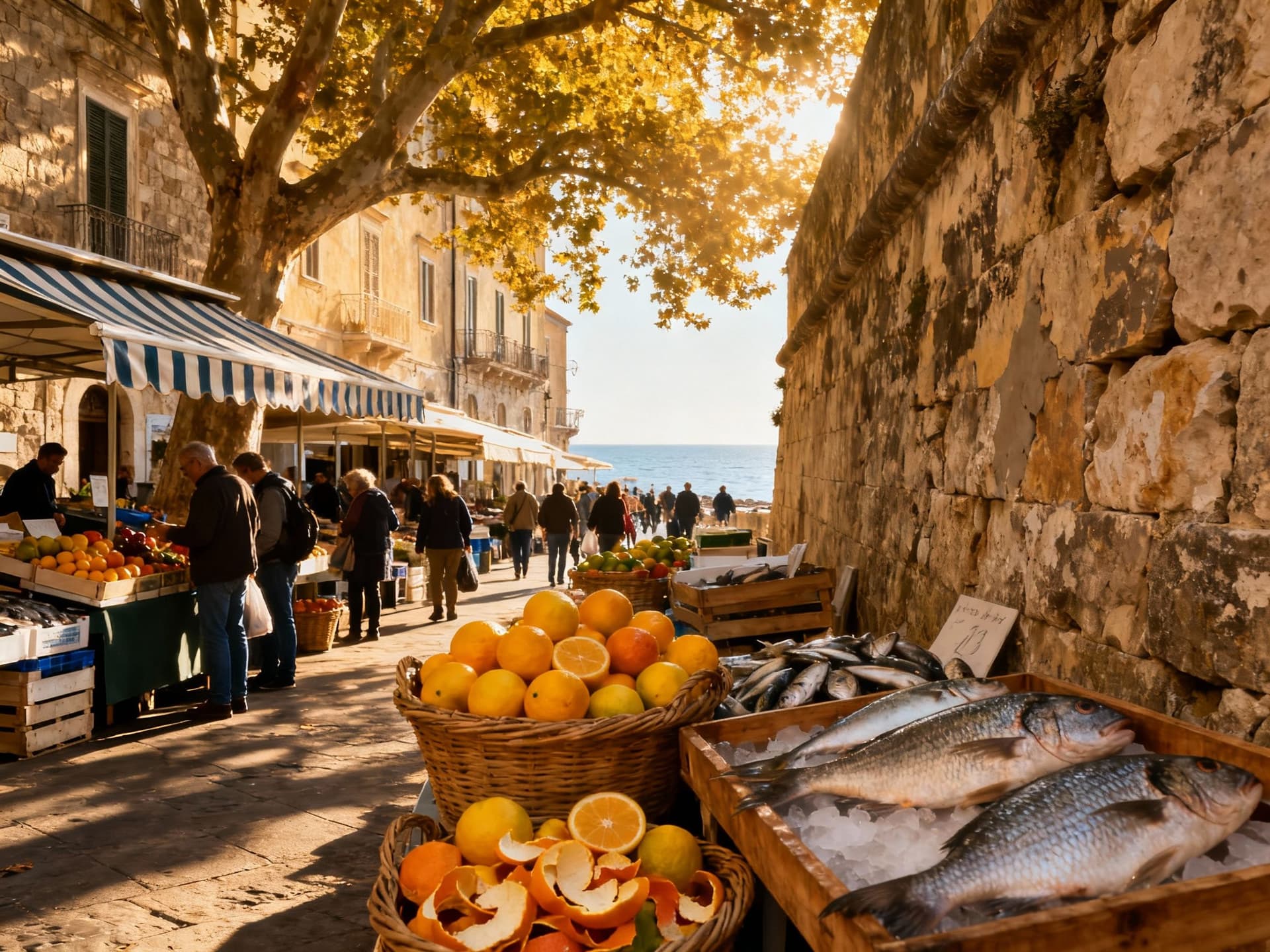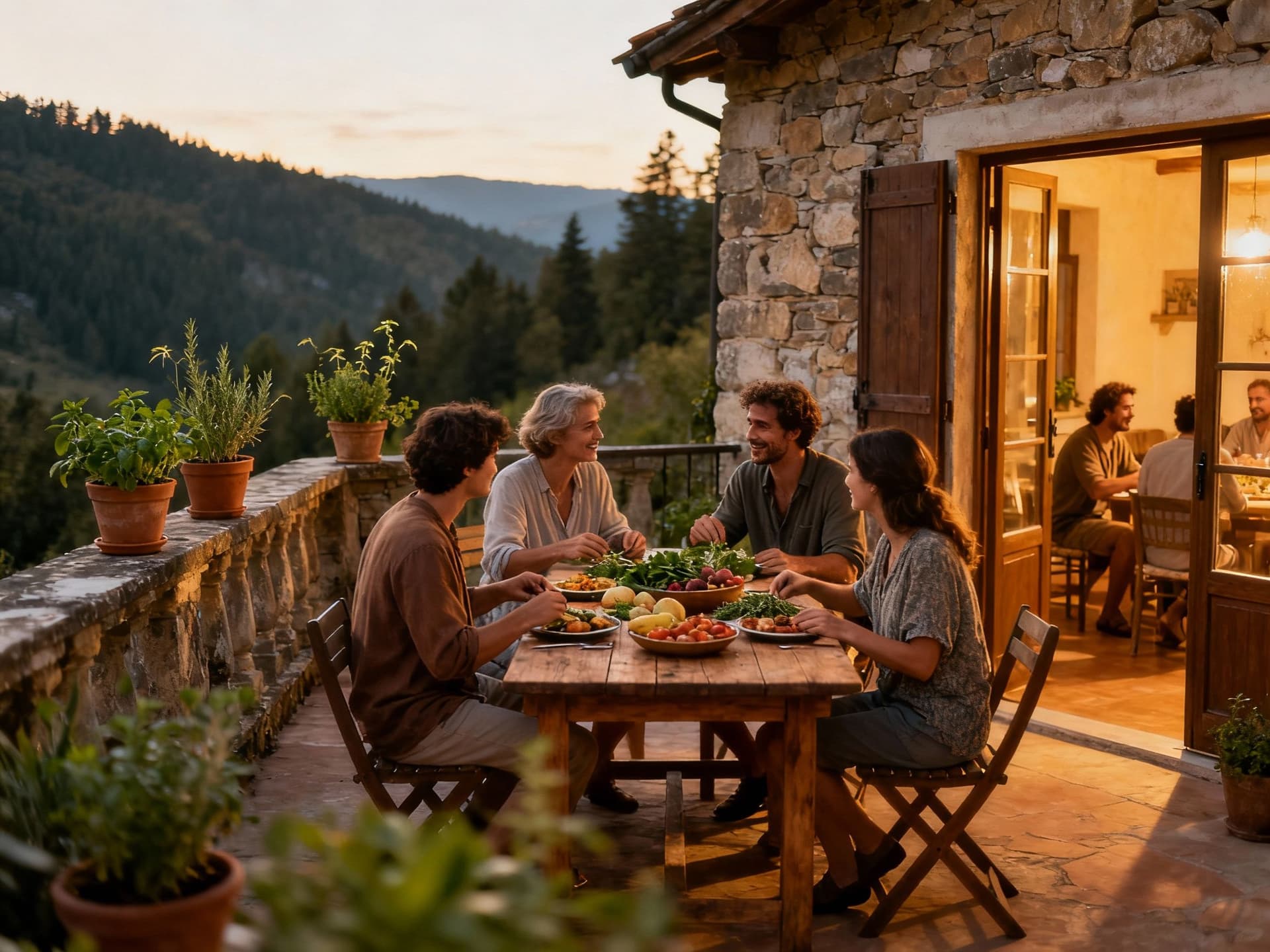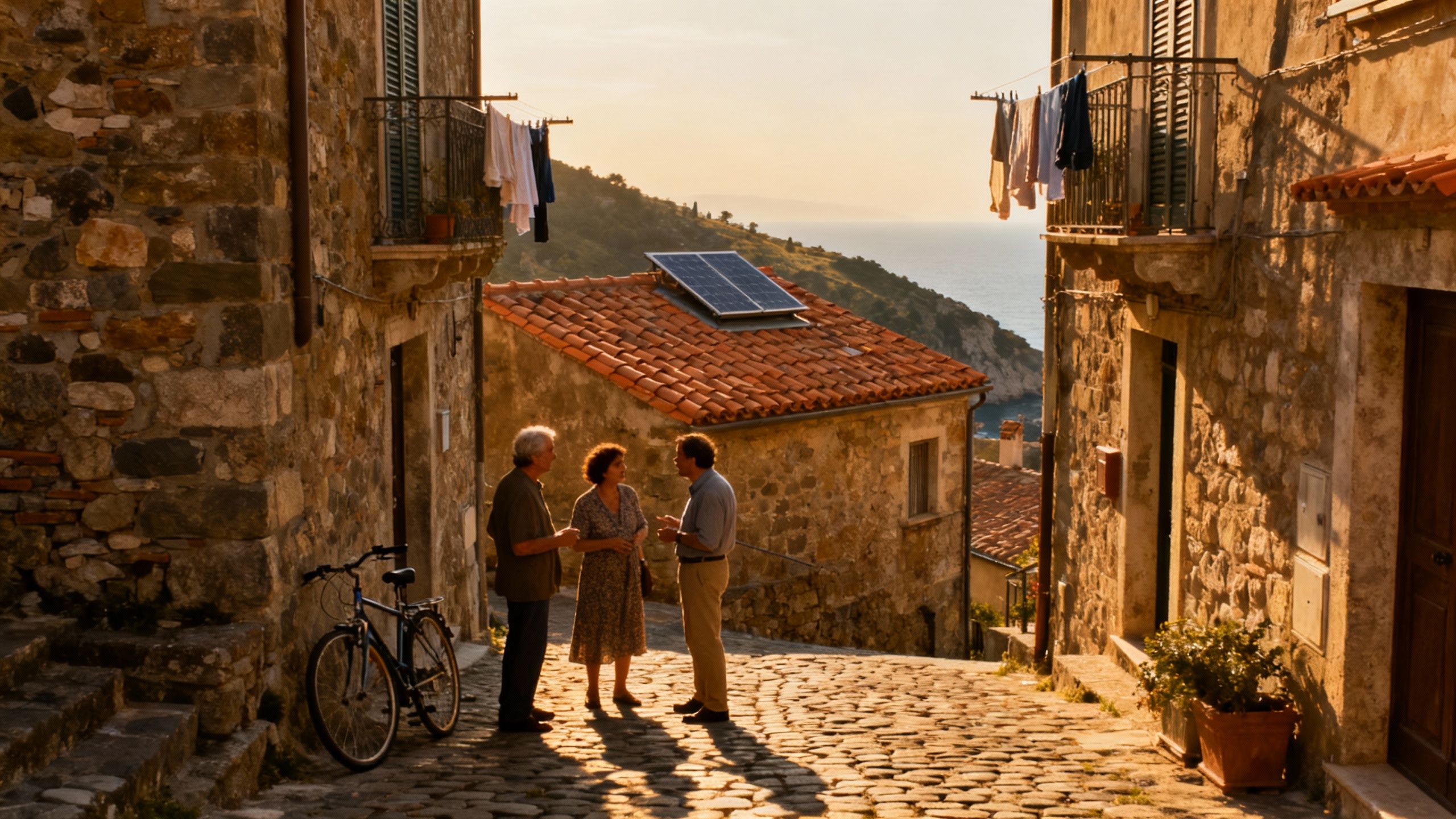How Italy’s Coast‑Forest Edge Outsmarts Price Myths
Coastal light and forest hush coexist in Italy — buy where the landscape supports low‑impact living. Data shows regional price gaps and renovation incentives that reward thoughtful stewardship.
Imagine waking to gulls on a rugged shoreline, then an hour later losing yourself in a chestnut forest where the air smells of damp earth and wood smoke. Italy’s green coasts and forested hinterlands stitch seaside light to mossy silence — a life that moves with tides and seasons, not just tourist calendars. For international buyers drawn to low‑impact living, these are the places where timber, stone and solar panels feel true to the landscape rather than fashionable additions. The question isn’t simply “coast or centre?” but how to translate that lived-in, regenerative dream into a practical purchase.
Living the Italian Verdant Life

Morning life in Italy often begins small and sensory: espresso at Piazza Garibaldi in a Ligurian village, fishermen unloading line-caught fish in a sheltered cove, or a neighbor arriving with porcini from yesterday’s walk. In places like Liguria’s Cinque Terre hinterland, Tuscany’s Garfagnana or the Gargano promontory in Puglia, the rhythm is local markets, seasonal menus, and afternoons spent maintaining small terraces and olive groves. These are homes shaped by weather and family — shutters, thick stone walls, and terraces that let you live outside most of the year.
Neighborhood Spotlight: Ligurian Foothills and Alta Versilia
Take the lower slopes above Levanto and Levanto’s market mornings: narrow alleys open to terraces of herbs, cafes where fishermen swap news, and tiny hardware shops that sell local masonry lime for repairing old stone. Properties here are compact, often built into the hillside, with terraced gardens and cisterns for rainwater. It’s a life of short walks, strong coffee and communal bar conversations — ideal if you want immediate local ties without needing a car for every errand.
Food, Seasonality and the Market That Shapes It
Markets define the week in many small towns: Saturday fish markets on the coast, midweek vegetable stalls inland, and autumn truffle fairs that send the region into soft frenzy. For buyers, this matters: proximity to markets and farm suppliers determines how feasible a farm-to-table lifestyle really is. If you crave foraging, olive pressing or chestnut festivals, choose areas where agricultural traditions are alive — you’ll find community, seasonal work exchanges and often the best local produce.
- Lifestyle highlights to seek out
- Daily espresso at a piazza bar in Levanto or Camogli
- Saturday market in Pontremoli (fresh pasta, chestnuts, artisans)
- Autumn truffle weekends in the hills of Tuscany and Umbria
- Morning swims at uncrowded rocky coves followed by forest walks
Making the Move: Practical Considerations

Dreams meet paperwork and market rhythms. Recent ISTAT data shows modest national price growth with regional variation; coastal and northern centres are pricier while many inland and forested provinces still offer relative affordability. That difference is your opportunity: buying where the coast gives way to forest often means more garden, lower per-square-metre price, and stronger potential for sustainable retrofits. But beware seasonal illusions: a town buzzing in August can be quiet in January, affecting rental income and local services.
Property types and how they shape daily life
Stone farmhouses with thick walls keep summers cool and feel rooted; small coastal flats open to public life; renovated townhouses give instant community but may have limited outdoor space. For green living, prioritise orientation for passive solar gain, existing mature trees, and scope for water harvesting. If off-grid or low‑energy living matters, look for properties with room for heat pumps, solar panels and battery storage, or those already improved under recent incentive schemes.
Work with specialists who understand Italy’s evolving incentives. Superbonus rules were scaled back in 2024 and many incentives now come with stricter conditions, but targeted ecobonus and renovation deductions still exist and can materially lower retrofit costs. A local architect or engineer familiar with Ecobonus and Sismabonus can help you structure work to qualify where possible — essential for properties needing thermal upgrades or seismic reinforcement.
- Steps to blend lifestyle with a practical purchase
- Visit in two seasons (late spring and late autumn) to feel daily life beyond high season
- Prioritise orientation, water access, and mature plantings for low-impact living
- Hire a local surveyor and engineer early — forests and coasts hide foundation and drainage issues
- Factor in seasonal service variability (shops, healthcare, transport) when choosing remoteness
Insider Knowledge: Mistakes Expats Often Make
We’ve met buyers who fell in love with a summer snapshot — a lively seaside market in August — then moved to discover closed shutters and a single weekly bus in winter. Others bought ancient houses without validating water rights, access lanes, or the cost of restoring traditional stonework. The common thread: they bought the feeling, not the year-round reality. A wiser approach balances sensory research with region-specific checks and local expertise.
Cultural rhythms and community integration
Language matters less than presence. Neighbors welcome those who participate: volunteer at the festival, buy from the market, attend the parish fair. Learning local phrases and showing interest in land stewardship — pruning olive trees, tending communal terraces — opens doors faster than any fluent accent. The payback is deeper friendships and practical help when you need trades or advice.
Long-term stewardship and how life changes
Plan for a living house: soils erode, storms shift drainage routes, and villages age. Properties that respect landscape — terraced gardens, native hedges, rainwater capture — cost less to maintain ecologically and hold value better. If you plan to rent, target shoulder seasons and experiences (truffle weekends, olive harvests) rather than high-summer spectacle.
- Expat red flags to watch for
- Properties with informal access routes or disputed servitudes
- Houses with no rainwater collection or visible erosion on terraces
- Renovation quotes that don’t separate structural, energy and permit costs
- Counting on rental income without checking year-round visitor numbers
Conclusion: Live the seasons, buy with care
If Italy’s coast-plus-forest life called to you, let the landscape lead and solid local expertise follow. Start with two-season visits, commission a survey and an energy audit, and ask local agents about seasonal service rhythms. Agencies that understand both heritage stonework and modern ecodesign will help you marry the romantic with the practical — so your Italian life is beautiful, resilient, and truly rooted.
Dutch property strategist who helped 200+ families find sustainable homes in southern Europe; expert in legal pathways and long-term stewardship.


